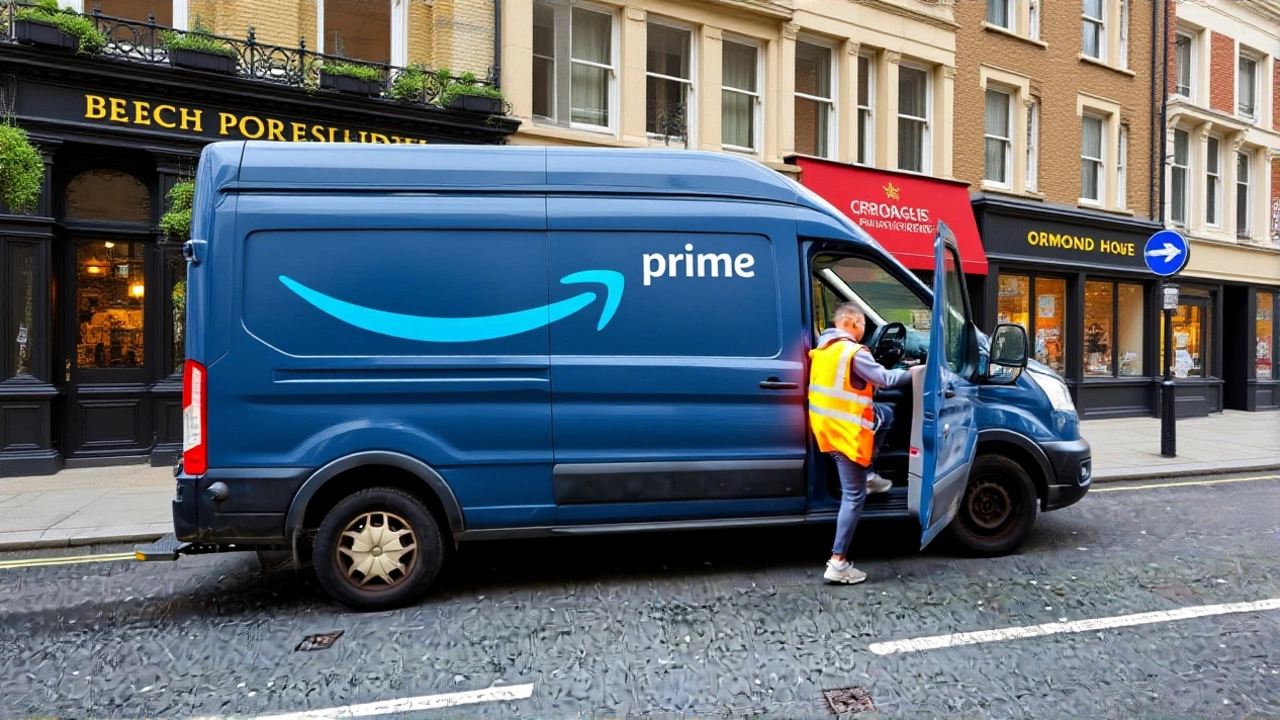Amazon to cut 30,000 jobs in largest layoff in company history

- Oct, 28 2025
- 0 Comments
- Caspian Hartwell
Amazon is set to eliminate nearly 30,000 corporate positions starting Tuesday, October 28, 2025 — the biggest workforce reduction in its 30-year history. The cuts, affecting roughly 10% of its global corporate staff, will hit departments like Human Resources, Operations, Devices and Services, and Amazon Web Services, the cloud giant headquartered in Seattle. Email notifications to impacted employees will go out at 9:00 AM Pacific Time, following mandatory training sessions for managers on Monday, October 27. This isn’t a rumor — it’s the culmination of a two-year strategy to shrink bloated teams built during the pandemic, and it’s sending shockwaves through the tech industry.
Why Now? The Pandemic Hangover
Between 2020 and 2021, Amazon hired over 500,000 workers to keep up with the e-commerce explosion. Offices swelled. Teams multiplied. By the end of 2021, corporate headcount had jumped from 300,000 to more than 800,000. But as lockdowns ended and consumer habits shifted, demand plateaued — and the company was left with too many people doing too little. Andy Jassy, who took over as CEO from Jeff Bezos in July 2021, inherited a machine that had grown too fast, too loud, and too expensive. Since then, he’s been quietly trimming fat: enforcing a five-day return-to-office rule in 2023, launching internal efficiency audits, and accelerating AI tools to replace manual tasks. This isn’t panic. It’s pruning.
The Numbers Don’t Lie
The 30,000 cuts surpass the previous record of 27,000 eliminated between late 2022 and early 2023, according to Layoffs.fyi, the San Francisco-based tracking site founded by Roger Lee. These aren’t voluntary exits or attrition. These are forced eliminations — salaried roles across the U.S., India, and the U.K. The scale is staggering. And it’s not happening in isolation. In 2025 alone, Intel Corporation cut 27,000 jobs, Microsoft Corporation slashed 15,000, Salesforce, Inc. removed over 9,000, and Meta Platforms, Inc. axed 4,000 — then added another 600 in a separate AI-driven purge. Even Target Corporation, a retail giant, cut 1,000 roles. The pattern is clear: tech is no longer growing by hiring. It’s growing by automating.
AI Is the Silent Workforce
Behind every layoff announcement is a machine learning model doing something faster, cheaper, and without coffee breaks. Amazon’s internal tools now auto-generate reports, schedule meetings, flag inventory issues, and even draft HR responses. At Meta, AI now handles content moderation that once required hundreds of moderators. At Amazon Web Services, predictive infrastructure management is replacing manual cloud monitoring teams. The trend isn’t just about saving money — it’s about redefining what work means. One former Amazon HR manager, who spoke anonymously, said: “We were training AI to replace us while we were training new hires. It felt surreal.”
What Happens Next?
While notifications begin October 28, some layoffs will trickle into the week of November 4, 2025, as Amazon works through global time zones and legal compliance in different countries. The company hasn’t confirmed exact numbers per division, but insiders say HR and internal operations are taking the hardest hit. Analysts at Layoffs.fyi warn this could be the first domino. “When Amazon moves, others watch,” says Roger Lee. “If they can cut 30,000 and still report strong earnings, why wouldn’t others follow?”

Amazon’s Silence Speaks Volumes
Despite repeated requests from FOX Business, Amazon declined to comment by the October 27, 2025 deadline. That silence — rare for a company that usually issues press releases for every product launch — tells its own story. They don’t want to frame this as a win. They don’t want to justify it. They just want to do it. And move on.
What This Means for Workers and the Economy
For the 30,000 affected, it’s personal. For the industry, it’s a warning. Tech’s golden age of unlimited hiring is over. The new metric isn’t growth — it’s efficiency. And efficiency, increasingly, means fewer humans. The ripple effects will be felt in Seattle’s housing market, in Indian tech hubs like Bangalore, and in the job boards where displaced employees scramble for roles that may no longer exist. Meanwhile, Amazon’s stock, which dipped slightly on the news, is expected to rebound quickly — investors reward cost cuts more than compassion.
Frequently Asked Questions
Which departments are being hit hardest by Amazon’s layoffs?
Internal corporate roles — especially in Human Resources (People Experience and Technology), Operations, and administrative support — are taking the largest cuts. While Amazon Web Services is also affected, the reductions there focus on non-engineering roles like customer success and internal tooling teams, not core infrastructure engineers. The goal is to eliminate redundancy, not technical capability.
Are these layoffs voluntary or forced?
These are forced eliminations. Amazon is not offering early retirement or buyouts at scale. Employees are being notified via email on October 28, with severance packages and outplacement services offered, but no option to opt out. This distinguishes the move from earlier rounds of attrition, which included voluntary departures.
How does this compare to other tech layoffs in 2025?
Amazon’s 30,000 cuts are the largest single announcement of the year. Intel matched Amazon’s 2022 record with 27,000, Microsoft cut 15,000, and Salesforce eliminated over 9,000. But Amazon’s move is significant because of its scale and market dominance — its actions often set the tone for the entire sector, especially around automation and remote work policies.
Will Amazon rehire in the future?
Amazon says it’s focused on "sustainable growth," not permanent downsizing. But future hiring will likely be tightly controlled — and heavily skewed toward AI, robotics, and logistics roles. Corporate roles are unlikely to return to pre-2021 levels. The company now prioritizes lean teams supported by automation, not large administrative structures.
Why didn’t Amazon respond to media requests?
Amazon’s silence suggests a strategic decision to avoid public debate. Unlike past layoffs where the company framed cuts as "optimization," this round is clearly about cutting costs after overexpansion. By not commenting, they avoid scrutiny over severance terms, geographic impact, or the ethical implications of replacing human workers with AI — and they prevent speculation that could hurt morale or investor confidence.
What’s the long-term impact on Seattle’s economy?
Seattle’s tech-driven economy could see a slowdown. With 30,000 corporate employees — many earning six-figure salaries — suddenly losing income, local spending on housing, dining, and services will dip. Real estate firms report increased vacancy rates in downtown office towers. The city’s tax base, which relies heavily on tech payroll, may face pressure unless new hires in AI or logistics offset the loss. It’s a reminder: when Amazon sneezes, Seattle catches a cold.